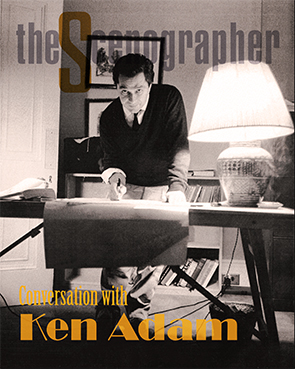ABOUT OUR STORY
Leading lights in film and contemporary theatre
Our beginnings MULTISALA INTERNATIONAL
Our first publishing experience was in 1998 when the opportunity arose to publish an architecture magazine. At that time a conspicuous transformation of movie theatres had begun. In Europe, especially in Italy, a new form of architecture had just emerged that dealt with facilities designed for public entertainment.
Architects began to design new movie theatres, first by transforming existing cinemas into multiplexes, then by designing purpose-built multiplexes. It was a time of extensive modernization. In the wake of this unpredictable change, “Multisala International”, the first and I believe then the only magazine on cinema architecture, was born. Unique, as there were no similar products at that time, that is, books or magazines about buildings intended for the screening of films, except for a few sporadic articles published in the most authoritative magazines on architecture. Our editorial team began to receive projects not only of Italian architects engaged in new builds, such as Renzo Piano and Massimiliano Fuksas, but also projects from around Europe from the most prestigious studios plus some American firms: the studio of Jon Jerde Partnership, to name just one.
THE SCENOGRAPHER is born
In 2002, we had the idea of including within the magazine not only architectural projects, but also articles that featured the creation and construction of the film set. This was a natural progression since we had formed relationships with both architects and scenic designers. Our first exclusive interview was with Oscar-winning production designer Ken Adam in London. Set design was becoming an increasingly compelling topic as multiplexes became a common feature in the urban landscape. Interest in new multiplex projects had begun to wane so we decided to create a new magazine that would showcase built sets.
We named it THE SCENOGRAPHER, precisely because it timed with the start of our collaboration and dialogue with the Art Directors Guild in Los Angeles, the American association of set designers. During this period, we published dozens of articles showcasing the skills of production designers in the U.S., essentially covering American film production design in the 2003-2010 timeframe.
We gathered all this fascinating material into a large historical collection taking the interview with the legendary production designer Ken Adam as our starting point. This was the pilot issue No. O, which marked the beginning of an exciting venture. This was followed by issues featuring interviews and articles with Michael Corenblith, Grant Major, Richard Sylbert, Guy Hendrix Dyas, Alex McDowell, Patrick Tatopoulos, Scott Chambliss, and Don Diers.
But the collection also reserved space for design for live performance, which later evolved into the predominant content of the issues we published from 2012 onward.(Paolo Felici Publisher)
SCSA STUDY CENTRE SCENIC ARTS
In 2008, THE SCENOGRAPHER team founded the Study Centre for Scenic Arts (SCSA), a platform for seminars and workshops held in Italy and Great Britain. Three international events in particular stand out, organised in Rome and in London between 2008 and 2010, at which theatre professionals and academics from all over Europe attended. In that same period collaborative projects took root with the British Film Designers Guild and the Society of British Theatre Designers Guild in the UK.
In Italy a number of preeminent theatre designers and directors were celebrated in features and monographic issues, among whom Pier Luigi Pizzi, Dante Ferretti, Ezio Frigerio, Danilo Donati and Luciano Damiani…
In 2012, production began on the prestigious monographs, which have celebrated and still celebrate directors, set, lighting and costume designers worldwide. In 2022, the magazine is transformed, changes its format, and begins the production of monographic collectible books.










